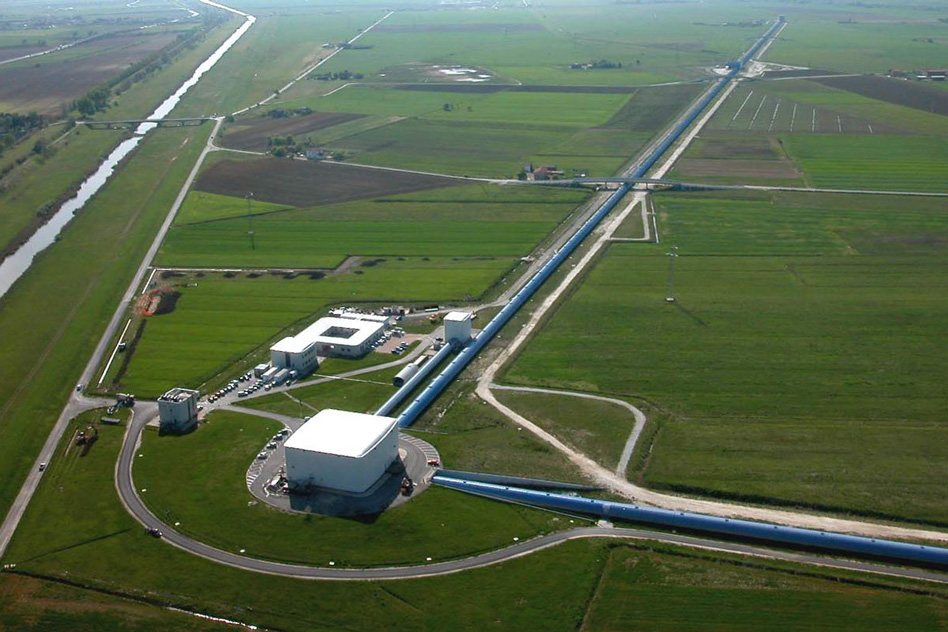
An aerial view of the Virgo site shows the Mode-Cleaner building, the Central building, the 3km-long west arm and the beginning of the north arm. The other buildings include offices, workshops, computer rooms and the control room of the interferometer. Image: The Virgo collaboration/CCO 1.0
For the first time ever, scientists used a three-detector network to observe gravitational waves in the final moments of a merger of two black holes.
Scientists from the Laser Interferometer Gravitational-Wave Observatory [LIGO] and the Virgo Collaboration detected the gravitational waves in a binary black hole system on Aug. 14 by using a three-detector network of gravitational-wave detectors in two countries.
“It is wonderful to see a first gravitational-wave signal in our brand new Advanced Virgo detector only two weeks after it officially started taking data,” Jo van den Brand of Nikhef and VU University Amsterdam, who is spokesperson for the Virgo collaboration, said in a statement. “That’s a great reward after all the work done in the Advanced Virgo project to upgrade the instrument over the past six years.”
The three-detector observation found a transient gravitational-wave signal that was produced by the coalescence of two stellar mass black holes.
Gravitational waves carry information about their dramatic origins and about the nature of gravity that cannot otherwise be obtained.
The detected gravitational waves—ripples in space and time—were emitted during the merger of two black holes with masses approximately 31 and 25 times the mass of the sun and located about 1.8 billion light years away.
The spinning black hole has about 53 times the mass of the Sun, meaning that about three solar masses were converted into gravitational-wave energy during the coalescence.
The volume of universe likely to contain the source shrinks by more than a factor of 20 when moving from a two-detector network to a three-detector network.
“As we increase the number of observatories in the international gravitational wave network, we not only improve the source location but we also recover improved polarization information that provides better information on the orientation of the orbiting objects as well as enabling new tests of Einstein’s theory,” Fred Raab, LIGO associate director for observatory operations, said in a statement.
The two LIGO detectors are located in Livingston, Louisiana, and Hanford, Washington and funded by the National Science Foundation (NSF) and the Virgo detector is located near Pisa, Italy.
“This is just the beginning of observations with the network enabled by Virgo and LIGO working together,” David Shoemaker of the Massachusetts Institute of Technology, who is the spokesperson for the LIGO Scientific Collaboration, said in a statement. “With the next observing run planned for fall 2018 we can expect such detections weekly or even more often.”
In 2015, scientists from LIGO observed gravitational waves for the first time ever, confirming one of Albert Einstein’s 1915 general theory of relativity. At the time, the researchers estimated that the black holes were about 29 and 36 times the mass of the Sun and the event took place 1.3 billion years ago.
The existence of gravitational waves was first demonstrated in the 1970s and 80s by Joseph Taylor, Jr., and colleagues. Taylor and Russell Hulse discovered in 1974 a binary system composed of a pulsar in orbit around a neutron star. In 1982, Taylor and Joel M. Weisberg found that the orbit of the pulsar was slowly shrinking over time because of the release of energy in the form of gravitational waves. The 2015 discovery was the first time that gravitational waves were observed themselves.




